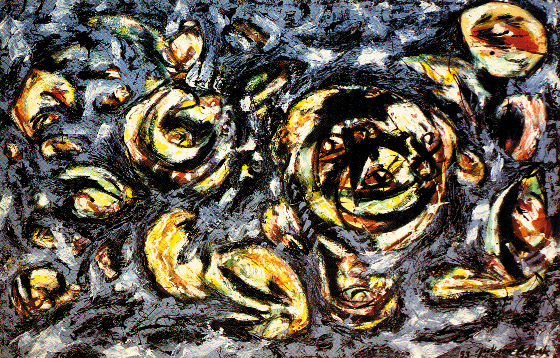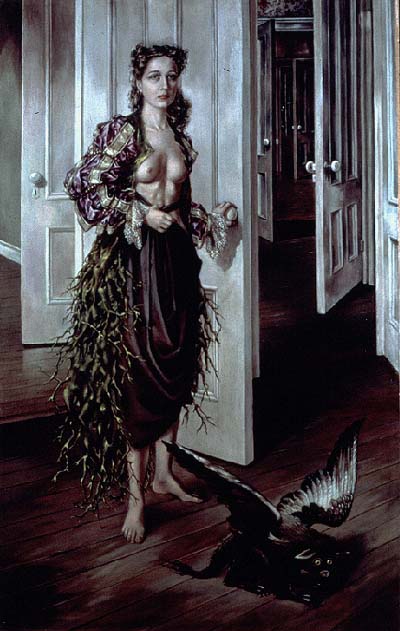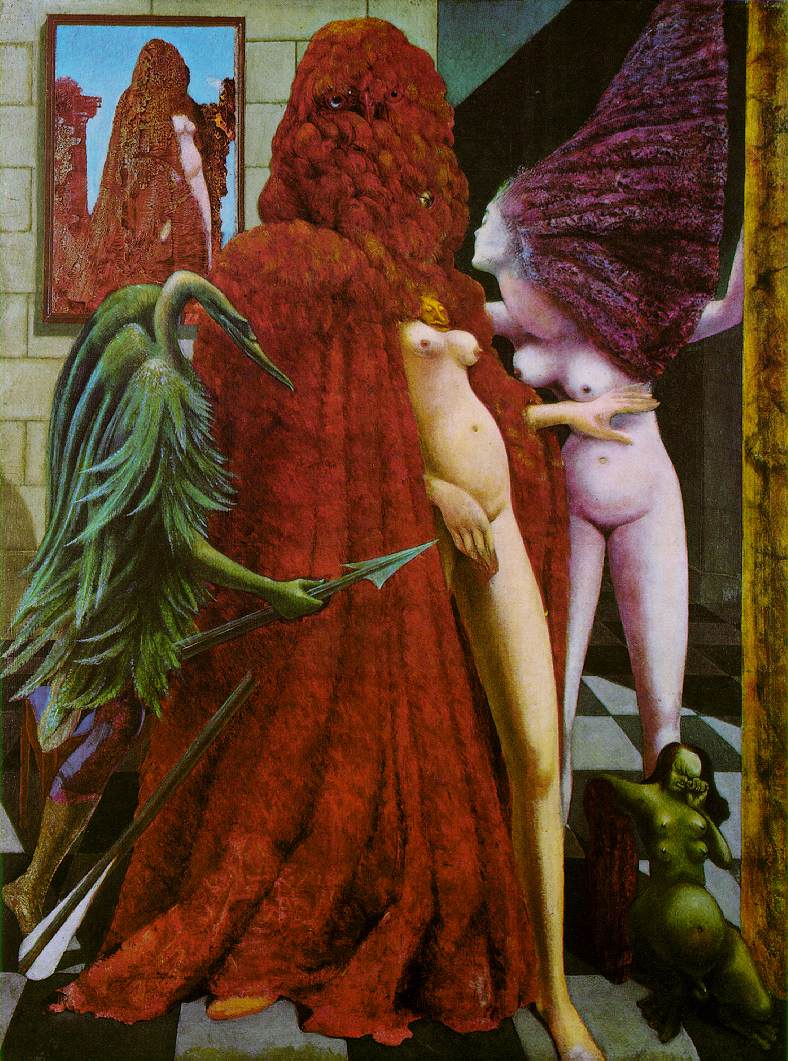January 04, 2004
surrealism & sexuality#4
Maybe I was looking in the wrong for the surrealist expressions of sexuality and the displacement of our experienced reality of sexuality as part of their rebellion against a bourgeois culture and desire to tranform that mode of life.
The 1940's American abstract expressionist covered over, or repudiate, their debts to the European surrealists:

Jackson Pollock, Ocean Greyness, 1953.
They--the New York School, as they are known in the art history books--- celebrated the depth of their revival and continuation of European abstraction instead.
The US is now seen as the centre of things, European surrealism is viewed as a dead end and formalist art criticism becomes hegemonic. On the formalist writing of art history (eg., Alfred Barr and Clement Greenberg) the Abstract Expressionists had evolved an "American" type painting that eschewed politics and celebrated modernity.
Let us retrace out steps back to the surrealists.
Consider this full length self-portrait of Dorothy Tanning at the age of thirty, bare breasted, standing in front of an endless succession of open doors, with a succubus crawling at her feet:

Dorothy Tanning, Birthday, 1942.
A succubus is not just a fantastic, furry creature: it is a female demon fabled to have sexual intercourse with sleeping men.
Does that image call into call into question the normality of human sexual experiences by dissolving our myths?
It introduces the female experience of sexuality as distinct from the male one. As this surrealist exhibition at the Tate makes clear:
"The portrayal of women as muses was a familiar surrealist theme. Believing that women had a closer connection to the desired irrationality of dreams than men, they pictured them as alluring sorceresses, child-women, and quasi-magical beings.....This way of presenting women was intended to elevate rather than diminish the female sex, but ran the risk of seeming to cast women as a passive foil to male creativity, without a voice of their own. "
An example is Max Ernst's painting, The Robbing of the Bride (1940), in which a female figure is transformed into an alluring, bird-like creature:

In Dorothy Tanning's self-portrait there is unease with being an enchantress.